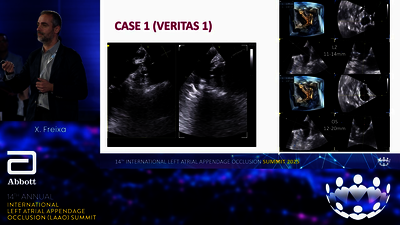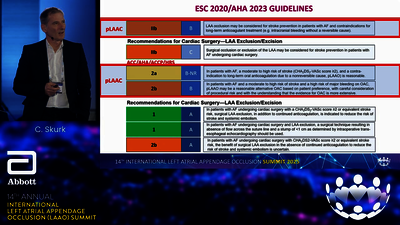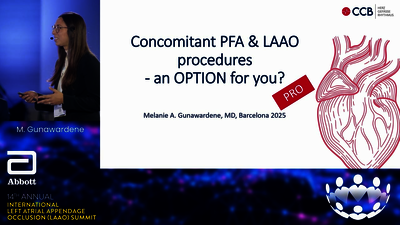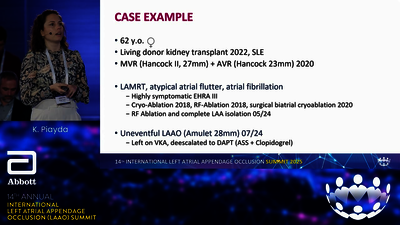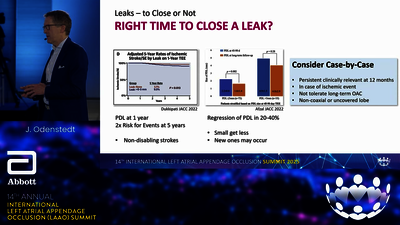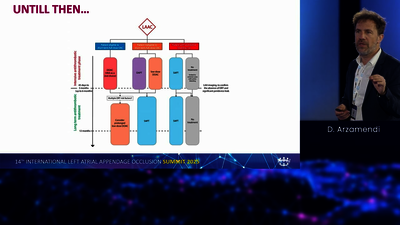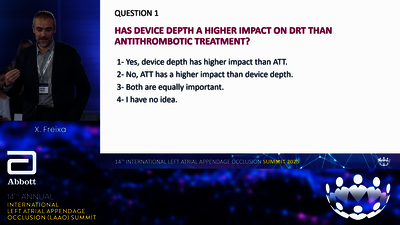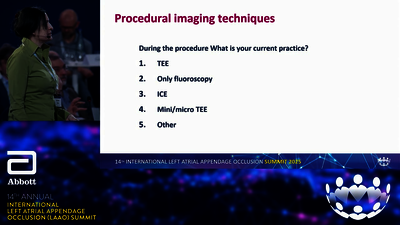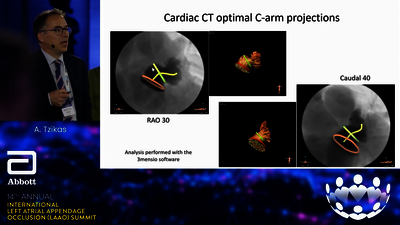Patent foramen ovale (PFO) is an embryonic defect associated with an increased risk of ischemic stroke.1 PFO closure combined with long-term antiplatelet therapy is recommended to prevent recurrent stroke in selected patients.2
Compelling data resulted in positive guidelines recommending PFO closure
Long-term data from the both the RESPECT trial12 and REDUCE trial,13 as well as data from the CLOSE trial,14 have revealed that with attentive patient selection, transcatheter PFO closure significantly reduces the risk of recurrent stroke compared with medical therapy in patients with an ischemic stroke of unknown cause—with no increased risk of serious adverse events or influence on major bleeding.4
Among patients age 18–65 who have had a cryptogenic ischemic stroke, cryptogenic stroke, TIA, or systemic embolism thought to be secondary to PFO due to absence of other etiologies:
Recommend percutaneous PFO closure
Recommendation: In patients between the ages of 18 and 60 with a prior PFO-associated stroke, the SCAI guideline panel recommends PFO closure rather than antiplatelet therapy alone (strong recommendation, moderate certainty of evidence).
This recommendation is independent of patient anatomy (i.e., presence of ASA, size of shunt). A risk of paradoxical embolism (RoPE) score of ≥ 7 may identify patients who are likely to receive greater benefit from PFO closure.
These guidelines were developed by SCAI, with representation from the American Academy of Neurology (AAN).
Recommendation: In patients 18 to 60 years of age with a nonlacunar ischemic stroke of undetermined cause, despite a thorough evaluation and a PFO with high-risk anatomic features, it is reasonable to choose closure with a transcatheter device and long-term antiplatelet therapy over antiplatelet therapy alone for preventing recurrent stroke. (Recommendation level 2b, level of evidence B-R).
Recommendation: In patients younger than 60 years with a PFO and embolic-appearing infarct and no other mechanism of stroke identified, clinicians may recommend closure following a discussion of potential benefits (absolute recurrent stroke risk reduction of 3.4% at 5 years) and risks (periprocedural complication rate of 3.9% and increased absolute rate of non-periprocedural AF of 0.33% per year).
With most of the evidence on PFO closure being obtained from Caucasian patients, a consensus statement was developed by Asian-Pacific clinical experts, accounting for the specific stroke and bleeding characteristics of Asian-Pacific patients and the specific Asian-Pacific context.
Key aspects of this consensus statement include:
- Regarding indications for PFO closure, follow international/global guidelines.
- Ensure that patients with recent embolic stroke of undetermined source (ESUS) are screened for PFO, using imaging modalities that are readily available in the hospital and on which the staff is best trained and most experienced e.g. transthoracic echocardiography (TTE), contrast transcranial doppler (TCD), transesophageal echocardiography (TEE), intracardiac echocardiography (ICE). Contrast TCD is widely available in the Asian-Pacific region and may be used as a first screening tool, followed by confirmation using TEE or TTE with bubble contrast.
- ESUS patients with significant PFO should undergo PFO closure as early as possible.
It was emphasised that clinical evidence for the above aspects should be collected among Asian-Pacific patients.
The Japan Stroke Society, The Japanese Circulation Society and Japanese Association of Cardiovascular Intervention and Therapeutics came together to review the evidence on PFO closure and recommend the following when it comes to selecting the appropriate patient for PFO closure:
Indication criteria for percutaneous closure of PFO for the purpose of stroke recurrence prevention:
- Indispensable condition: Implementation of the intervention will be considered in case of satisfaction of all items described below:
- Patients who meet the diagnosis criteria for PFO related cryptogenic stroke
- Patients in whom antithrombotic therapy can be conducted during a certain period after percutaneous closure implementation
- Patients <60 years of age in principle
- Female patients who are not pregnant or do not want to become pregnant within a year
- Recommendation condition: Implementation of the intervention will be recommended in case of satisfaction of all aforementioned items and any items described below:
- The presence of high risk PFO in terms of function/anatomy such as:
- Large volume of shunt
- Concomitant atrial septal aneurysm (ASA)
- Concomitant Eustachian valve (EV)
- Concomitant Chiari network
- Right-left shunt found at rest (without Valsalva maneuver)
- Onset of the aforementioned type of cryptogenic stroke during appropriately conducted antithrombotic therapy.
- The presence of high risk PFO in terms of function/anatomy such as:
Interventional PFO closure should be performed in patients aged 16 to 60 years (after extensive neurological and cardiological diagnostic workup) with a history of cryptogenic ischemic stroke and patent foramen ovale, with moderate or extensive right-to-left shunt. (Recommendation level A, Evidence level I).
Among patients younger than age 60 who have had a cryptogenic ischemic stroke thought to be secondary to PFO (due to absence of other etiologies):
- Strong recommendation—among patients in whom anticoagulation is contraindicated or declined—to provide PFO closure + antiplatelet therapy, versus antiplatelet therapy alone
- Weak recommendation—among patients who are open to all options—to provide PFO closure + antiplatelet therapy versus anticoagulant therapy
- Weak recommendation—among patients in whom closure is contraindicated or declined—to provide anticoagulant therapy versus antiplatelet therapy
For carefully selected patients with a recent ischemic stroke or TIA attributed to a PFO, PFO device closure plus long-term antiplatelet therapy is recommended over long-term antithrombotic therapy alone, provided all the following criteria are met: (Evidence Level A):
- Age 18–60 years;
- The diagnosis of the index stroke event is confirmed by imaging as a nonlacunar embolic ischemic stroke or a TIA with positive neuroimaging or cortical symptoms;
- The patient has been evaluated by a neurologist or clinician with stroke expertise, and the PFO is felt to be the most likely cause for the index stroke event following a thorough etiological evaluation to exclude alternate etiologies.
Connext
Live
TV
- Kent DM, Thaler DE. Is patent foramen ovale a modifiable risk factor for stroke recurrence? Stroke. 2010;41(10 Suppl):S26–30. doi.org/10.1161/STROKEAHA.110.595140.
- Messé SR, Gronseth GS, Kent DM, et al. Practice advisory update summary: patent foramen ovale and secondary stroke prevention. Neurology. 2020;94(20):876–885.
doi.org/10.1212/WNL.0000000000009443. - Homma S, Sacco RL. Patent foramen ovale and stroke. Circulation. 2005;112(7):1063–1072. doi.org/10.1161/CIRCULATIONAHA.104.524371.
- Mojadidi MK, Zaman MO, Elgendy IY, et. al. Cryptogenic stroke and patent foramen ovale. J Am Coll Cardiol. 2018;71(9):1035–1043.
doi.org/10.1016/j.jacc.2017.12.059. - Saver JL. Clinical practice. Cryptogenic stroke. N Engl J Med. 2016;374(21):2065–2074. doi.org/10.1056/NEJMcp1503946.
- Kernan WN, Ovbiagele B, Black HR, et al. AHA/ASA guidelines for the prevention of stroke in patients with stroke and transient ischemic attack. Stroke. 2014;45(7):2160–2236. doi.org/10.1161/STR.0000000000000024.
- Homma S, Sacco RL, Di Tullio MR, et al. Effect of medical treatment in stroke patients with patent foramen ovale: patent foramen ovale in cryptogenic stroke study. Circulation. 2002;105(22):2625–2631. doi.org/10.1161/01.CIR.0000017498.88393.44.
- Elgendy AY, Saver JL, Amin Z, et al. Proposal for updated nomenclature and classification of potential causative mechanism in patent foramen ovale-associated stroke. JAMA Neurol. 2020;77(7):878–886. doi.org/10.1001/jamaneurol.2020.0458.
- Pristipino C, Sievert H, D’Ascenzo F, et al. European position paper on the management of patients with patent foramen ovale. EuroIntervention.
2019;14(13):1389–1402. doi.org/10.4244/EIJ-D-18-00622. - Kernan WN, Ovbiagele B, Black HR, et al. Guidelines for the prevention of stroke in patients with stroke and transient ischemic attack. Stroke.
2014;45:2160–2236. doi.org/10.1161/STR.0000000000000024. - Diener H-C, Sacco RL, Easton JD, et al. Dabigatran for prevention of stroke after embolic stroke of undetermined source. N Engl J Med. 2019;380(20):1906–1917. doi.org/10.1056/NEJMoa1813959
- Saver JL, Carroll JD, Thaler DE, et al. Long-term outcomes of patent foramen ovale closure or medical therapy after stroke. N Engl J Med. 2017;377:1022–1032. doi.org/10.1056/NEJMoa1610057.
- Kasner SE, Rhodes JF, Andersen G, et al. Five-year outcomes of PFO closure or antiplatelet therapy for cryptogenic stroke. N Engl J Med. 2021;384(10):970–971. doi.org/10.1056/NEJMc2033779.
- Mas J-L, Derumeaux G, Guillon B, et al. Patent foramen ovale closure or anticoagulation vs. antiplatelets after stroke. N Engl J Med. 2017;377(11):1011–1021. doi.org/10.1056/NEJMoa1705915.
- Kavinsky CJ, Szerlip M, Goldsweig AM, et al. SCAI guidelines for the management of patent foramen ovale. JSCAI. 2022;1(4)100039. doi.org/10.1016/j.jscai.2022.100039.
- Kleindorfer DO, Towfighi A, Chaturvedi S, et al. 2021 Guideline for the prevention of stroke in patients with stroke and transient ischemic attack: a guideline from the American Heart Association/American Stroke Association. Stroke. 2021;52(7):e364–e467. doi.org/10.1161/STR.0000000000000375.
- Diener H-C, Akagi T, Durongpisitkul K, et al. Closure of the patent foramen ovale in patients with embolic stroke of undetermined source: a clinical expert opinion and consensus statement for the Asian-Pacific region. Int J Stroke. 2020;15(9):937–944. doi.org/10.1177/1747493020941658.
- The Japan Stroke Society, The Japanese Circulation Society, and Japanese Association of Cardiovascular Intervention and Therapeutics Guidance on Percutaneous Closure of Patent Foramen Ovale (PFO) in Cryptogenic Stroke Patients. pfo-council.jp/publications/ (accessed April 2023).
- Diener H-C, Grau A, Baldus S. Cryptogenic stroke and patent foramen ovale (abridged and translated version). Neurol Res Pract. 2019;1(1):1–10.
doi.org/10.1186/s42466-019-0008-2. - Kuijpers T, Spencer FA, Siemieniuk RAC, et. al. Patent foramen ovale closure, antiplatelet therapy or anticoagulation therapy alone for management of cryptogenic stroke? A clinical practice guideline. BMJ. 2018;362:k2515. doi.org/10.1136/bmj.k2515.
- Wein T, Lindsay MP, Côté R, et. al. Canadian stroke best practice recommendations: secondary prevention of stroke, sixth edition practice guidelines, update 2017. Int J Stroke. 2018;13(4):420–443. doi.org/10.1177/1747493017743062.
